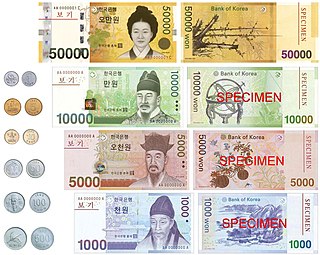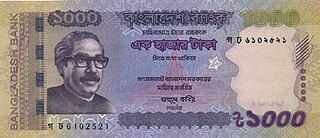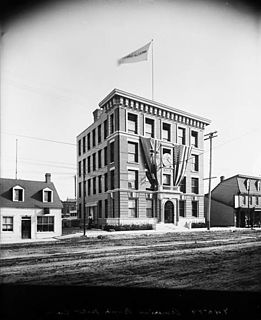
The Bureau of Engraving and Printing (BEP) is a government agency within the United States Department of the Treasury that designs and produces a variety of security products for the United States government, most notable of which is Federal Reserve Notes for the Federal Reserve, the nation's central bank. In addition to paper currency, the BEP produces Treasury securities; military commissions and award certificates; invitations and admission cards; and many different types of identification cards, forms, and other special security documents for a variety of government agencies. The BEP does not produce coins; all coinage is produced by the United States Mint. With production facilities in Washington, D.C., and Fort Worth, Texas, the Bureau of Engraving and Printing is the largest producer of government security documents in the United States.

The Reserve Bank of India (RBI) is India's central bank, which controls the issue and supply of the Indian rupee. RBI is the regulator of the entire Banking in India. RBI plays an important part in the Development Strategy of the Government of India.

The South Korean won or Korean Republic won is the official currency of South Korea. A single won is divided into 100 jeon, the monetary subunit. The jeon is no longer used for everyday transactions, and appears only in foreign exchange rates. The won is issued by the Bank of Korea, based in the capital city of Seoul.
The Nepalese rupee is the official currency of the Federal Democratic Republic of Nepal. The Nepalese rupee is subdivided into 100 paisa. The issuance of the currency is controlled by the Nepal Rastra Bank, the central bank of Nepal. The Nepalese rupee was introduced in 1932, when it replaced the Nepalese mohar at the rate 2:1.

The Bangladeshi taka is the currency of the People's Republic of Bangladesh. In Unicode, it is encoded at U+09F3৳ (HTML ৳).

The Indian rupee is the official currency of India. The rupee is subdivided into 100 paise, though as of 2019, coins of denomination of 1 rupee is the lowest value in use. The issuance of the currency is controlled by the Reserve Bank of India. The Reserve Bank manages currency in India and derives its role in currency management on the basis of the Reserve Bank of India Act, 1934.

The Mauritian rupee is the currency of Mauritius. One rupee is subdivided into 100 cents. Several other currencies are also called rupee.

The Pakistani Rupee, has been the official currency of Pakistan since 1948.

Nashik is an ancient city in the northern region of the Indian state of Maharashtra. Situated on the banks of river Godavari, Nasik is well known for being one of the Hindu pilgrimage sites, that of Kumbh Mela which is held every 12 years.
Coins of the Indian rupee (INR) were first minted in "1950". New coins have been produced annually since then and they make up a valuable aspect of the Indian currency system. Today, circulating coins exist in denominations of One Rupee, Two Rupees, Five Rupees, Ten Rupees and Twenty Rupees. All of these are produced by four mints located across India, in Kolkata, Mumbai, Hyderabad and Noida.

Joint Stock Company "Goznak" is a Russian joint-stock company responsible for research and development as well as manufacturing security products including banknotes, coins, stamps, identity cards, secure documents, state orders and medals, as well as providing secure services. It incorporates seven factories and one research and development institute involved in different stages of the development, research, and manufacturing cycle.

The history of the Rupee traces back to Ancient India. The mention of rūpya by Panini is seemingly the earliest reference in an Indian text about coins. The term in ancient India was used for referring to a coin.

The Hyderabadi Rupee was the currency of the Hyderabad State from 1918 to 1959. It coexisted with the Indian rupee from 1950. Like the Indian rupee, it was divided into 16 annas, each of 12 pai. Coins were issued in copper for denominations of 1 and 2 pai and ½ anna, in cupro-nickel for 1 anna and in silver for 2, 4 and 8 annas and 1 rupee.

ABCorp is an American corporation providing secure payment, retail and ID cards, vital record and transaction documents, systems and services to governments and financial institutions – and is one of the largest producers of plastic transaction cards in the world. ABCorp has offices and manufacturing facilities in the United States, Canada, Australia, New Zealand, China, Germany, UAE and South Africa. Formerly known as the American Bank Note Company, the organization was originally a major worldwide engraver of national currency and postage stamps.
Fake Indian Currency Note(FICN) is a term used by officials and media to refer to counterfeit currency notes circulated in the Indian economy. In 2012, while responding to a question in parliament, the Finance Minister, P. Chidambaram, admitted that there is no confirmed estimate of fake currency in India. However, several central and state agencies are working together, and the Ministry of Home Affairs has constituted the Fake Indian Currency Notes Co-ordination Center (FCORD) to curb this menace.
The India Security Press is a government press is a subsidiary of the Security Printing & Minting Corporation of India Limited (SPMCIL), a public undertaking of the Indian government. The company is charged with the task of printing passports, visas, postage stamps, post cards, inland letters, envelopes, non-postal adhesives, court fees, fiscal, and Hundi stamps in the country.
Bharatiya Reserve Bank Note Mudran Private Limited (BRBNMPL) is a wholly owned subsidiary of Reserve Bank of India which prints bank notes for the Reserve Bank of India (RBI). It was established in 1995 to address the demand of bank notes. The company operates in Indian and global markets, catering to security document needs of Central banks and monetary authorities of the world by designing, printing and supplying banknotes. BRBNMPL supplies a major portion of bank note requirement in the country with the remaining requirements met through Security Printing and Minting Corporation of India Limited (SPMCIL), a public sector undertaking wholly owned by Government of India. BRBNMPL has two presses in Mysuru and Salboni. The present capacity for both the presses is 16 billion note pieces per year on a two-shift basis.

The Indian 2000-rupee banknote (₹2000) is a denomination of the Indian rupee. It was released by the Reserve Bank of India (RBI) on 8 November 2016 after the demonetisation of ₹500 and ₹1000 banknotes and has been in circulation since 10 November 2016. It is a part of the Mahatma Gandhi New Series of banknotes with a completely new design.
India Government Mint, Hyderabad is one of the four mints in India. Based in Cherlapally, Secunderabad in the Indian state of Telangana, the mint was originally established in 1803 AD as the Royal Mint to serve as the mint for the Nizam of Hyderabad. The mint was founded by Mir Akbar Ali Khan Sikander Jah, Asaf Jah III and was originally situated at Sultan Sahi in Moghalpura suburb of Hyderabad city. In 1950, the mint was taken over by the Government of India, and in 1997 it was shifted to its present location at Cherlapally in Secunderabad. Indian 1, 2, 5 and 10 rupee coins are produced in this mint.

The Indian 200-rupee note (₹200) is a denomination of the Indian rupee. Post 2016 Indian banknote demonetisation, the new currency notes have been announced by the Reserve Bank of India-- ₹2,000, ₹500, ₹200, ₹100, ₹50, ₹20 and ₹10.














